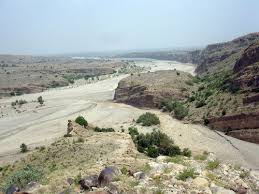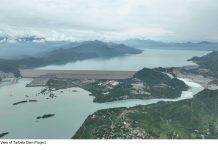By Muhammad Luqman
In a major development for harnessing scarce water resources in Southern Punjab, the Pakistan Water and Power Development Authority (WAPDA) has awarded the consultancy contract worth Rs. 156.226 million to a joint venture headed by NESPAK for feasibility study, detailed engineering design, preparation of tender documents and PC-I of Murunj Dam Project over Kaha hill torrent.
Murunj Dam Project will be constructed across the nullah (hill torrent) about 15 Kilometers from Mari village and 116 Km west of Rajanpur, the central Pakistan district of Punjab. Kaha Nullah is one of the largest hill torrents of the Koh-e-Sulaiman Mountain Range located in the vicinity of Rajanpur with average annual inflows of 183,000 acre feet. The available water resources are very scarce in Rajanpur and adjoining areas facing acute shortage of fresh water for drinking and agriculture.
Murunj Dam Project has three main objectives namely storage of water for irrigated agriculture and drinking purpose, flood mitigation and power generation. The project will have gross water storage of 800,000 acre feet. Annual monsoon rains give rise to flashy hill torrents causing inundation of thousands of acres of land in the adjoining foothills and rendering damages to public property and cultivated land each year. The project will generate 12 megawatt (MW) cheap and environmental-friendly electricity.
“The project is unique in nature for Southern Punjab and will help alleviate poverty from the remote and backward region. It will change existing economic indicators and uplift the living standard of the people,” WAPDA spokesman said.
The project will have tangible benefits and bring about 120,000 acre barren land into irrigable, ground water recharging, and fisheries development. Implementation of project will have significant positive impact and uplift of local economy.
The districts of D.G. Khan and Rajanpur in Southern parts of Punjab province have 13 hill torrents.
The major torrents like Wador, Kaha, Chachar and Mathanwa regularly hit adjoining areas and some of them also have dispersal structures on them, which usually fail to direct the flow of water into canals or River Indus, which is some 20 to 30 kilometers away from them.
Since the area is sloppy, water, with natural gravity flow, travels down to watercourses, canals and river, taking pressure off the provincial government to find any long-term solution to the crisis; once the area gets cleared of water, no one remembers the problem.
Put together, these torrents , during Monsoon season, produce more water than that of River Ravi.
Many countries in the world have such areas and have found varied solutions. The experience of Japan, which has almost identical topography and torrents pattern, can be followed by Pakistan.
The construction of Murunj dam will be the first of many firsts in harnessing the waters that have been a source of destruction in the past.















